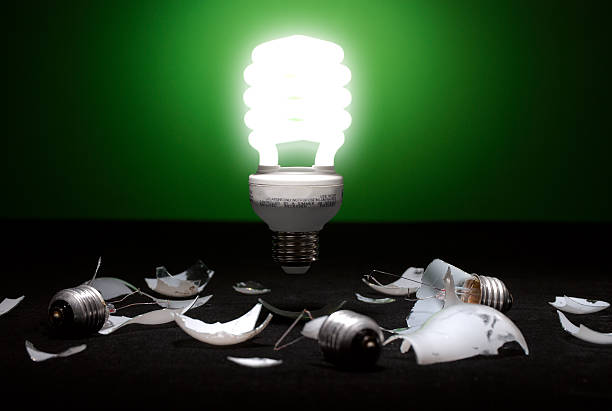Why Do LED Lights Dim?
1. Brief introduction
LED lights are extremely common lamps in modern life, and they are also widely used lamps.
But even for convenient and practical LED lamps, there may be some situations where the light dims or the LED lights become weaker during use.
Although LED lamps are very commonly used in real life and have many advantages. Such as long life (usually 10,000 to 30,000 hours of life), easy to use, low cost, adjustable color temperature and other characteristics. However, even if the high-quality LED lights have been used for a long time, or the method of use is not appropriate, it may be due to the inappropriate environment of use, etc. Under the influence of various factors, it is inevitable that the light will dim. , or the phenomenon that the light emitted by the lamp beads becomes weaker.
Whenever this phenomenon occurs, it always makes people feel very distressed! The lamps in the home are dimmed, making life very inconvenient!
So why do LED lights dim? What’s the rationale behind this? How should we solve this problem?
This article will lead readers to explore this question together, and try to give the most practical answer!

2. Why do LED lights dim?
2.1. Drive corruption
LED lamp beads are required to work at low DC voltage (below 20V), but our usual mains is AC high voltage (AC 220V).
To turn the mains into the electricity required by the lamp beads, a device is needed called “LED constant current drive power supply”.
2.2. LED burnout
The LED itself is composed of lamp beads one by one. If one or part of them does not light up, it will inevitably make the whole lamp dim.
The lamp beads are generally connected in series and then in parallel – so if a certain lamp bead is burned, it may cause a batch of lamp beads not to light up.
2.3. LED light decay
The so-called light decay is that the brightness of the light source is getting lower and lower – this situation is more obvious on incandescent and fluorescent lamps.
LED lights cannot avoid light decay, but their light decay speed is relatively slow, and it is generally difficult to see changes with the naked eye.
However, it does not rule out that inferior LEDs, or inferior bead boards, or due to objective factors such as poor heat dissipation, lead to faster light decay of LEDs.
Light decay is arguably the most common cause of dimming LED lights.
Light decay generally refers to its luminous flux. When charging the surface of the photosensitive drum, as the charge accumulates on the surface of the photosensitive drum, the potential also increases continuously, and finally reaches the “saturation” potential, which is the highest potential.
The surface potential will decrease over time. Generally, the potential during operation is lower than this potential. The process of this potential naturally decreasing with time is called the “dark decay” process.
When the photosensitive drum is scanned and exposed, the potential of the dark area (referring to the surface of the photoconductor that is not irradiated by light) is still in the dark decay process; The conductivity rises rapidly, forming the photoconductive voltage, the charge disappears rapidly, and the surface potential of the photoconductor also drops rapidly. It is called “light decay”, and finally slows down.
In fact, there are many reasons for the light decay of LED products. The most important one is the heat problem. Although many manufacturers do not pay special attention to the heat dissipation problem in the secondary products, the light decay degree of these secondary LED products will be higher than that if they pay attention to heat dissipation for a long time. LED products are higher.
The thermal resistance of the LED chip itself, the influence of silver glue, the heat dissipation effect of the substrate, and the colloid and gold wires are also related to light decay.
The photodegradation effect is also called the S-W effect. When a-Si:H film is irradiated with strong light or current for a long time, defects will be generated in it, which will reduce the performance of the film, which is called the Steabler-Wronski effect.
There are still many controversies about the cause of the S-W effect, and the microscopic mechanism of the recession is still inconclusive, which has become a hot topic in the research of amorphous silicon materials at home and abroad.
The general view is that the S-W effect is caused by the illumination resulting in the generation of new dangling bond defect states (deep energy levels) in the band gap, which can affect the position of the Fermi level EF of the a-Si:H thin film material. , so that the distribution of electrons changes, which on the one hand causes changes in optical properties, and on the other hand affects the recombination process of electrons.
These defect states become additional recombination centers for electrons and holes, resulting in increased electron capture cross-section and decreased lifetime.
In a-Si:H thin film materials, Si-H bonds and Si-Si bonds similar to crystalline silicon can exist stably. These bonds have large bond energy and are not easily broken.
Due to the structural disorder of the a-Si:H material, the bond lengths and bond angles of some Si-Si bonds are changed and the Si-Si bonds are in a strained state.
The chemical potential of highly strained Si-Si bonds is comparable to that of H, and can be interrupted by external energy to form Si-H bonds or reconstitute stronger Si-Si bonds.
The dangling bond density of the a-Si:H film increases if the broken strained Si-Si bonds are not reconstituted.
In order to better understand the mechanism of the S-W effect and control the dangling bonds in the a-Si:H thin film, in order to find the stabilization treatment method and process, for more than 20 years, domestic and foreign scientists have made unremitting efforts, and proposed a large number of There are mainly weak bond breaking (SJT) model, “H glass” model, H collision model, Si-H-Si bridge bond formation model, “defect pool” model, etc., but there is still no unified view.

3. How to solve this?
(1) Switch zero control
For the correct circuit of the lamp, connect the neutral wire to the lamp, switch off the live wire, and return to the lamp after the switch is disconnected.
That is to say, the switch controls the live wire. If the circuit is connected incorrectly, the live wire is connected to the light, and the switch is under the zero wire, it becomes the switch zero control.
If the switch is controlled to zero, when the switch is turned off, the live wire is always charged on the lamp, and the live wire will generate a weak current to the ground.
Since LED lights are more sensitive to current, there will be a reason why the LED lights emit weak light when the switch is turned off.
Solution: Just switch the switch, live wire and neutral wire that control the lamp circuit, and use the switch to control the live wire to solve the problem.
(2) The switch has an indicator light
Many switches today are smart switches, and many smart switches will have indicator lights.
If there is an indicator light, when the switch is turned off, the indicator light is on, and the indicator light will generate a weak current.
Since LED lights are more sensitive to current, there will be a reason why the LED lights emit weak light after the switch is turned off.
Solution: Just remove the indicator light of the smart switch, or replace it with a switch without an indicator light.
(3) The wires near the LED lights are denser
In the home circuit, due to the large number of electrical appliances, the wires we arrange will be denser.
For example, when the wires near the LED light are denser, the nearby wires will generate induced current.
Since LED lights are more sensitive to current, there will be a reason why the LED lights emit weak light after the switch is turned off.
Solution: replace LED lights with incandescent lights.
If you don’t want to replace the incandescent lamp, you can buy a 220V intermediate relay, connect the coil of the intermediate relay to the two terminals of the LED lamp, and use the coil to absorb the induced current, which can completely solve this fault.

It can be seen that there is a reason for whether the LED light is dimmed or weak. If you want to solve it, you have to investigate the cause.
If it is because the switch is empty, you only need to switch the switch, live wire and neutral wire that control the lamp circuit, and use the switch to control the live wire to solve the problem.

